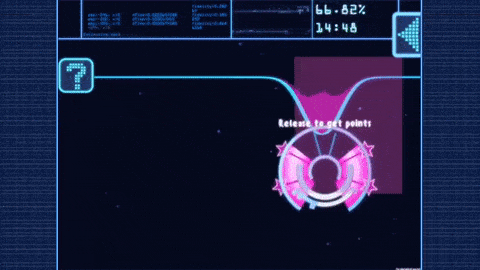After an A.I. beat the human champion at Go, a game almost infinitely more complex than chess, some might feel like tossing the towel and letting our robot overlords take their rightful place. Not so fast! We’re still good for something. Pressed to find a solution for a complicated quantum physics problem that neither the researchers themselves nor an algorithm could properly solve, Danish physicists turned to the gaming community. They devised a game which mimicked the task at hand while also keeping it fun, and found some gamers came up with novel “outside the box” solutions which the algorithm couldn’t even touch. Points for humanity!

The problem the researchers at Aarhus University in Denmark were trying to solve deals with moving atoms around without wrecking the information they contain, which is essential to the functioning of a quantum computer. Using lasers, scientists can trap atoms in an optical lattice so you can use them to code qubits or quantum bits which can be 0 and 1 at the same time, unlike classical bits.
It’s when you move the atoms using so-called optical tweezers to perform operations that things start to crumble. Move them too slowly and the system loses its quantum state. Too fast and again you disrupt the system.
“There is a shortest process duration with perfect fidelity, denoted the quantum speed limit (QSL),” the authors write in their paper published in Nature, “which imposes a fundamental limit on the process duration.”
“We had atoms in arrays like eggs in an egg tray, and we wanted to pick up atoms and move them around,” said Jacob Sherson, a quantum physicist at Aarhus University in Denmark. “But atoms, they are not really balls; they are more like waves. So as soon as you pick them up, they start to slosh and have motion, and it’s very hard to move these things fast.”
The researchers tried to give the task to supercomputers, but it proved far too complex. The variables and possible combinations were simply too much for the algorithm. That’s when the physicists realized it’s time for some raw human brain power. You see, we humans are very good at solving patterns, filtering information and using what’s called “intuition” to jump many steps and arrive at a possible solution.
To mimic the sort of challenges the physicists were facing, a game called “Bring Home Water” was developed. In the game, the player has to collect a liquid gathered at a low point of a flexible line and move it to the desired location. The player has to do this carefully, mind the speed and momentum.
By grabbing and flexing the surface, the player is essentially emulating the optical tweezer. The physics did such a good job with the game that the players’ scores could more accurately determine where to place the tweezers relative to the atom to perform a quantum operation.
“One can do things in games that cannot be done in reality, so gamers are used to experimenting with possibilities that go beyond the classical laws of physics,” Sabrina Maniscalco of the University of Turku in Finland, who was not involved in the study, wrote in a commentary for LA Times. “Perhaps this ability to think outside the box allows them to make the creative leap necessary to tackle quantum problems.”
The solutions found by the human players were far more effective than those found by the computer. Using data from the best players, the researchers tweaked the algorithm so it handles things better. It’s 30 percent faster now. It went so well that the Danish team wants to release another game to tackle other problems. If you’re interested you can play the game by downloading Quantum Moves from the App Store or Google Play.
Previously, citizen science games helped researchers make some serious breakthroughs. Galaxy Zoo asks gamers to identify and classify a huge body of galaxies while FoldIt lets you fold proteins. Using FoldIt, some gamers cracked a decade old HIV puzzle in only ten days.





